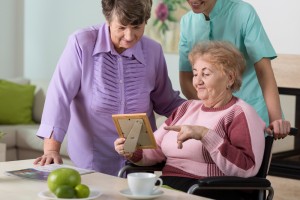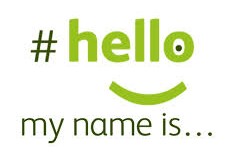
Here in the Woodland, we like to think that we can name all of the little creatures and our fellow Elves that live here, as well as knowing something about what makes them get up in the morning (or in the evening in the case of those badgers).
General hospitals can be their own kind of wilderness though; with frequent changes of wards, teams and rotations of staff, it can be difficult for the other professionals to know who everybody is, never mind for the patient.
Appel and colleagues published an RCT in the American Journal of Medicine in January this year, attempting to fill a gap in the literature by conducting an evaluation designed to measure the impact of photographs on patient recall and perceived communication within the hospital environment.
The primary objective of this study was to determine whether providing patients with photographs of their health care team, in addition to names and roles, improved their recall of the members of their care team compared with providing them with:
- names and roles only, or
- not providing names, roles, or photographs, as per standard care.
The secondary objective was to determine whether patients who receive photographs of their care team members perceive improved communication with their care team.

Can photos help patients remember who is caring for them?
Methods
This was a concealed allocation, parallel group, RCT.
The trial had a control group and then 2 study groups. The groups received either:
- No handout (control)
- Handout with the names and roles of their clinicians (names)
- Handout with the names, roles and photographs of their clinicians (photos)
This work sits very nicely with Kate Granger’s work and the #hellomynameis campaign; highlighting how important it is for patients and carers to know who their treating team is.

as simple as #hellomynameis
Results
Using estimates from previous literature, the study team calculated a desired sample size of 93 in each group. They assumed a dropout rate of 8%, and so set the goal for the sample size at 300 patients. Due to a lack of resources, the data collection was stopped after 256 patients.
30% of participants could not initially recall a single clinician by name without being shown any visual cues. The mean number of names ranged from 2.0 to 2.8 across the groups, without clinical significance.
The mean number of roles that people could identify ranged from 4.8 to 4.9 across the groups, without clinical significance.
A question asked was: “for those people you met during your stay, please circle the faces you recognize and if you remember, please write their names and roles under their faces”
Correct answers:
- Control: 2.3 (1.8)
- Names: 2.5 (1.9) reported p=0.01 in comparison to control
- Photos: 3.6 (2.4) reported p=0.04 in comparison to names
However the standard deviations overlap considerably, potentially nullifying these results completely.
- 86.5% reported that having the names of their clinical team would be ‘somewhat’ or ‘very useful’.
- 92.4% reported that having the photos of their clinical care team would be ’somewhat’ or ‘very useful’.
- 78% responded that photographs were more useful than names in remembering their clinicians
Of the people who received a list of the people who take care of them, the majority looked at it 1-4 times during their stay; 68% names, 77% photos.
For the secondary objective relating to the quality of communication; there was no significant difference between the intervention and control arms.

30% or people could not name a single clinician looking after them.
Summary
Frequent clinical staff rotations are a challenge for patients and their family members and helping patients identify their care team members and respective roles could potentially improve the patient experience. The research team have summarised that:
Patients receiving photographs of their clinicians recalled significantly more care team members.
The statistics however show a large overlap in standard deviations and so this conclusion is questionable. The study did not manage to identify a positive link between recall and perceived quality of care. Maybe suggesting that the perceived care is more to do with how the clinicians act, as opposed to what the patient recalls? Perhaps a simple introduction would help change this?
Unfortunately 70 patients were lost to follow up due to data collection only on weekdays; these patients being discharged at weekends prior to data collection. The number of drop-outs does appear to be equal amongst the groups and so is less likely to impact the results, but does reduce the power of the study.
The authors suggest utilising an electronic application if possible, and it would be interesting to see this on a larger scale study. They did highlight that the greatest use could be to provide clinicians with a visual directory of their colleagues to improve inter-professional relationships and communication.
For those of you who would like to know more about the #hellomynameis campaign, here is a short video from Dr Kate Granger herself.
Link
Appel L, Abrams H, Morra D, Wu RC. Put a face to a name: a randomized control trial evaluating the impact of providing clinician photographs on inpatient’s recall. The American Journal of Medicine. Jan 2015, vol 128, issue 1, pg 82-89. DOI: http://dx.doi.org/10.1016/j.amjmed.2014.08.035

RT @Mental_Elf: Guess who? Put a face to a name http://t.co/vylyreZ85e
Guess who? Put a face to a name: Kirsten Lawson reviews a randomised controlled trial looking at the impact of… http://t.co/NT3c5rNYF1
Guess who? Put a face to a name http://t.co/IrJSA3FLEx #MentalHealth http://t.co/QMHViaRZGX
Today @LiaisonLawson on an RCT looking at impact of providing clinician photos on inpatient’s recall of names & roles http://t.co/vylyrfgJtO
Gillian Harkness liked this on Facebook.
Putting a face to a name @Mental_Elf blog reviews RCT study http://t.co/WHbYUV84t9 #hellomynameis #communication #patients
RT @Mental_Elf: Hi @GrangerKate We’ve mentioned you and #hellomynameis in our blog today http://t.co/vylyrfgJtO < Interested in your though…
Can photos help patients remember who is caring for them? We report on a new RCT http://t.co/vylyrfgJtO
@Mental_Elf photo of disliked carer put in bin by my ld brother. Carer left soon after.
Face2Name #RCT study written about in @Mental_Elf blog http://t.co/Lq69lfWXrz @UHNOpenLab
Don’t miss: Guess who? Put a face to a name http://t.co/vylyrfgJtO #EBP
Top story: Guess who? Put a face to a name http://t.co/kIGjM2v8iE, see more http://t.co/ngPrOoOnvJ
Mental Elf: Guess who? Put a face to a name http://t.co/GOQJ0Sd2Yd
Guess who?
Do pictures of HCP’s help patients ?
Fab post from @Mental_Elf > http://t.co/7Q6UcWxuZC
#EBP #hellomynameis #SundayBlogs